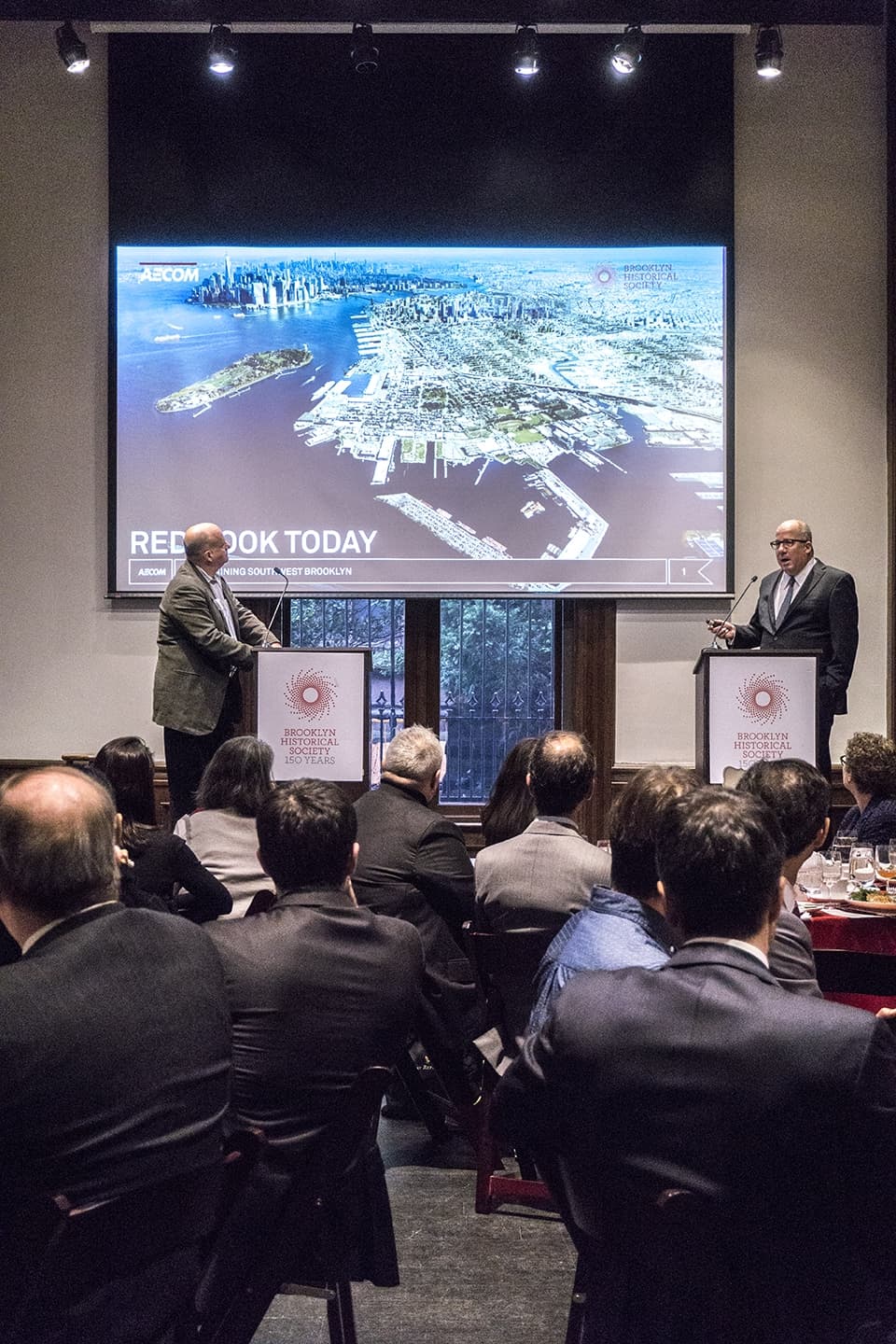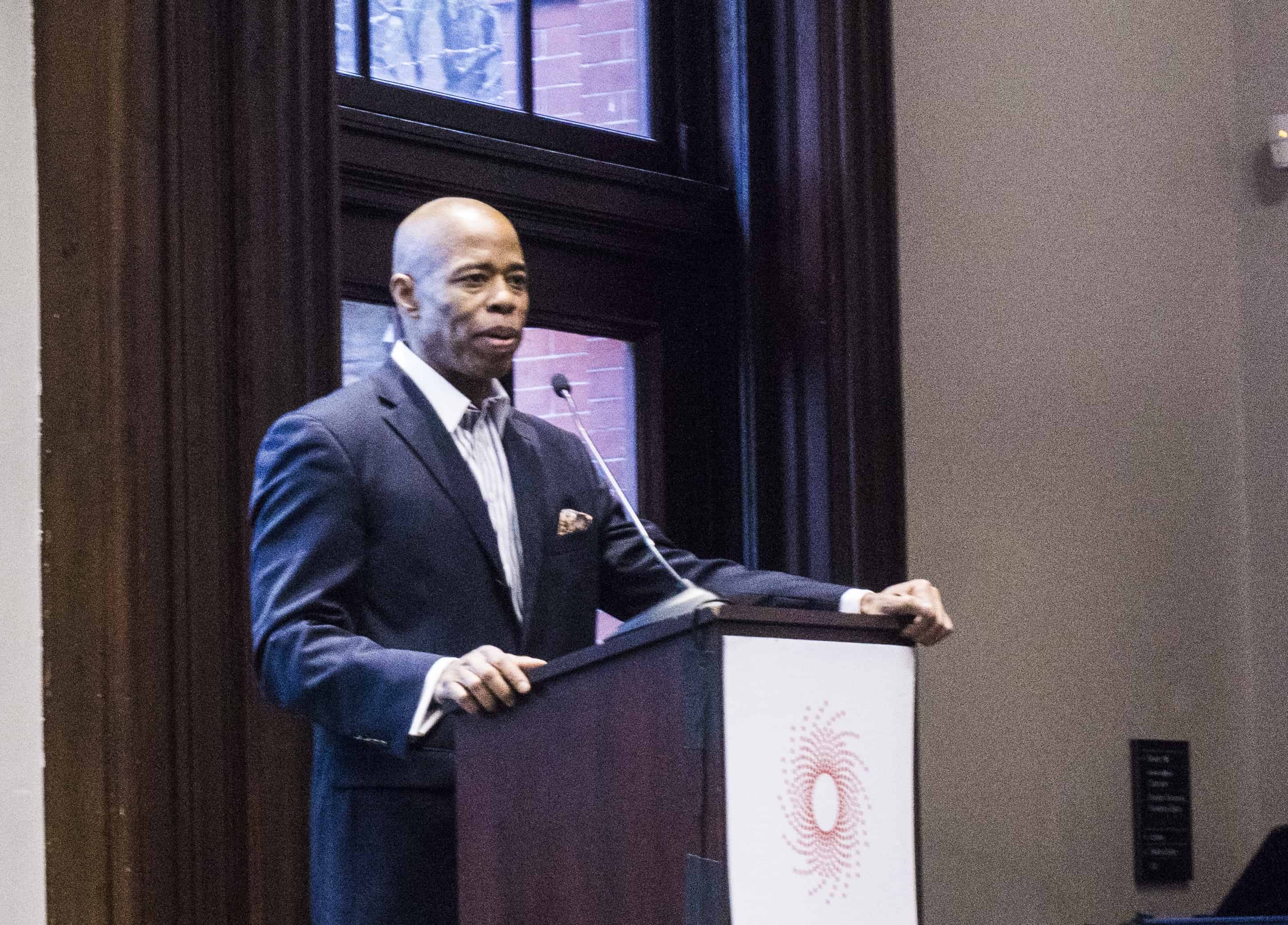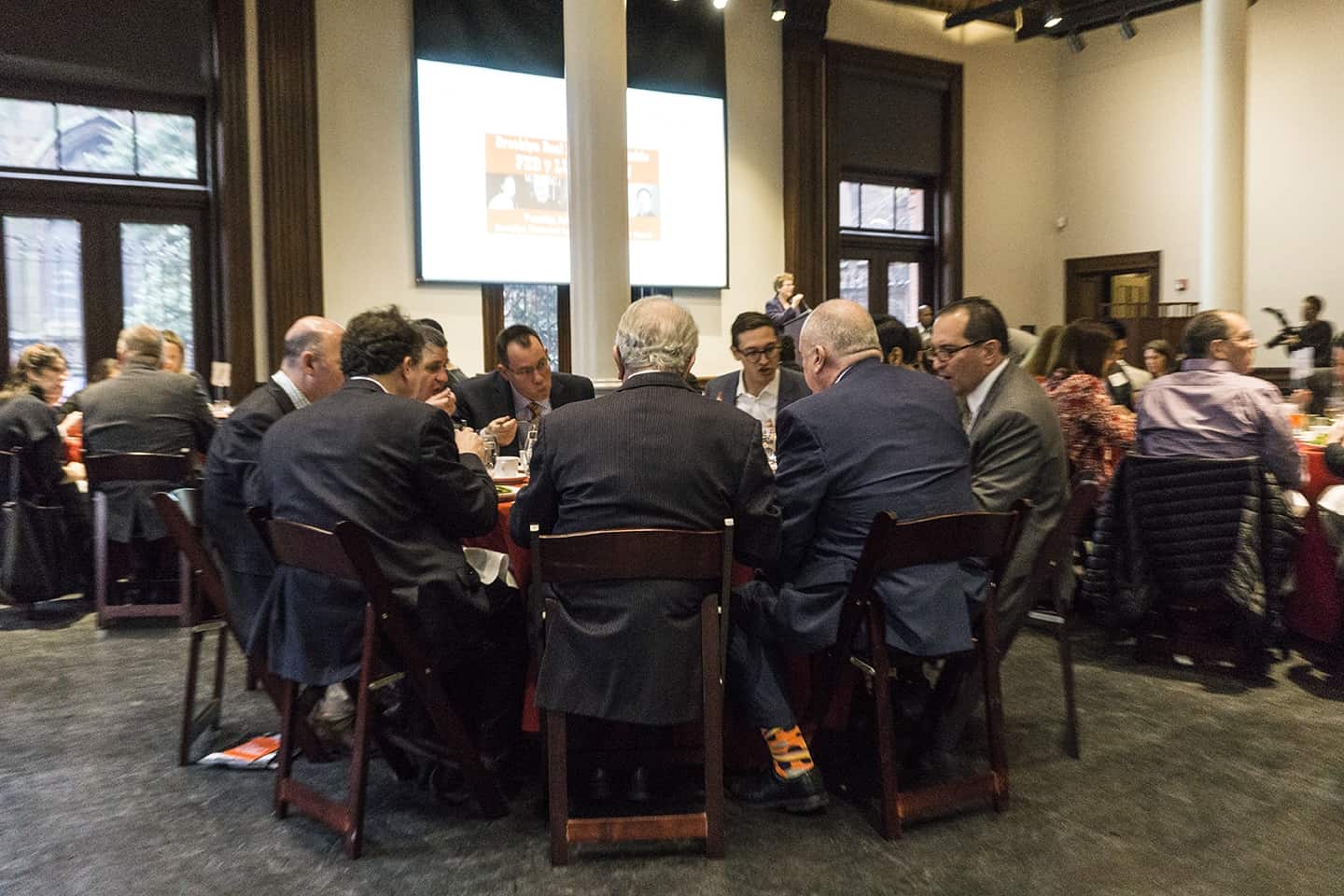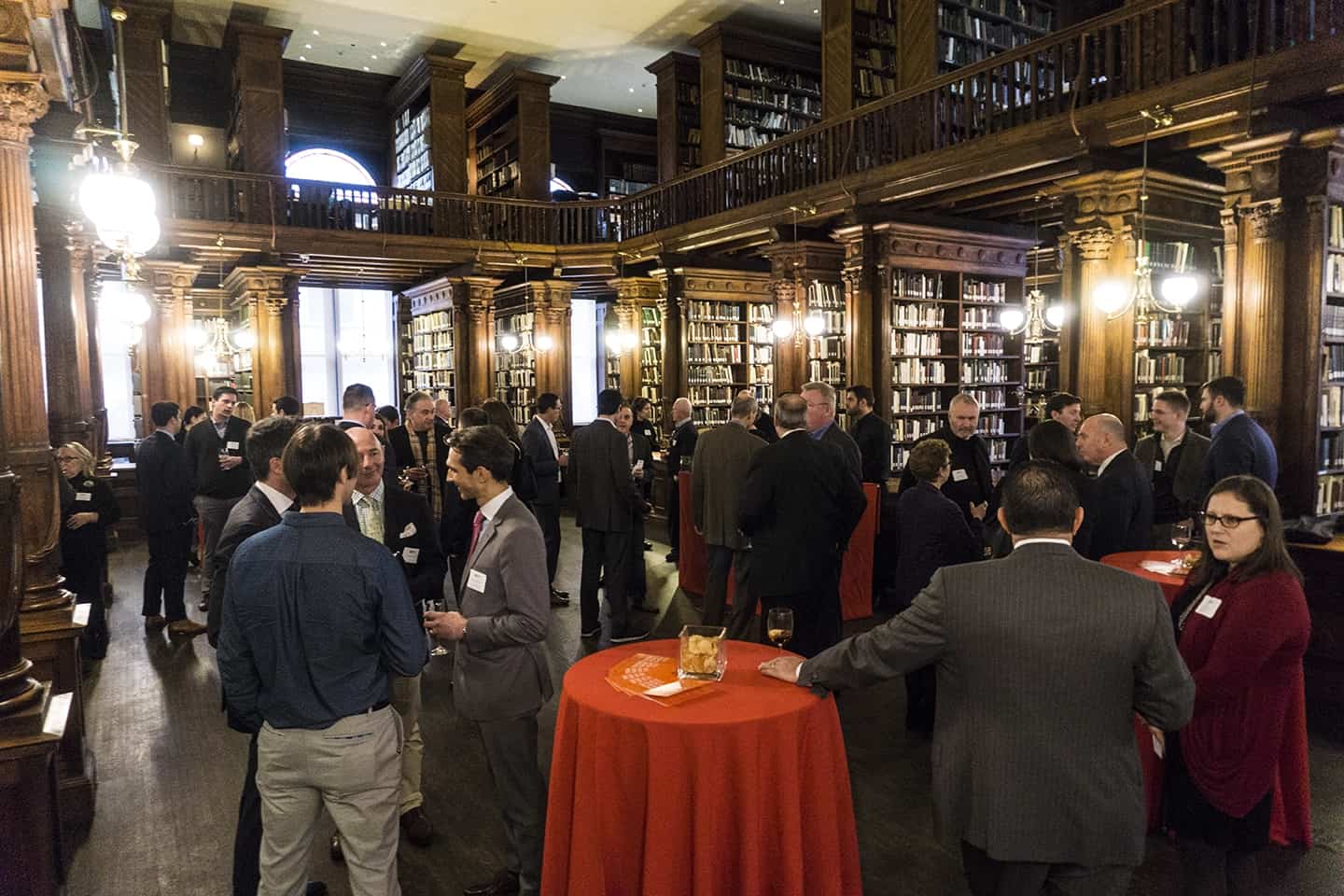
Representatives from city agencies, real estate investment groups, and brokerage firms gathered to discuss prospects for development in Red Hook at the Brooklyn Historical Society’s quarterly Real Estate Roundtable (RER) February 7. The RER aims to give attendees “a new perspective on an aspect of real estate in Brooklyn – and hopefully, an inside scoop or two!” according to Alison Novak of Hudson Companies, speaking on behalf of the steering committee.
The $300 tickets gained attendees access to a networking ‘cocktail hour’ as well as a panel of speakers. These included Jill Eisenhard, executive director of the Red Hook Initiative; Chris Ward, of AECOM; Marshall Sohne, of Sohne Brothers Real Estate Development in the Columbia Waterfront District; and representatives from NYCHA’s Office of Recovery and Resilience and architects Kohn Peterson Fox Associates, the designers of the FEMA-funded storm-proofing of the Red Hook Houses.
The purpose of the event is to raise money to support the Brooklyn Historical Society and its programs. The overall premise of the discussion was the ‘underdevelopment’ of Red Hook, and the challenges attendees might face in constructing new buildings in the area.
During the cocktail hour brokers mingled over breadsticks and business cards, commenting on Red Hook’s lack of transportation and the possible negative influence of the NYCHA housing projects on new luxury housing construction. Several had observed that much of Red Hook’s population is relatively engaged and vocally opposed to new development, an issue that Borough President

Eric Adams commented on in his introduction to the panel.
“I want this borough to grow and build, but I bring you a message from the ground: it is more than brick and mortar, it is human beings,” Adams cautioned the lunching crowd. “This has to be a borough where we grow children and families to are healthy and prosper. Everyone must benefit.”
Adams warned the attendees that pushback against gentrification “is the next wave that’s going to impact your industry,” and that responsible development must include young people, disciplining unscrupulous landlords eager to displace tenants, and diffusing resentment.
“If you believe that your interests’ planning can be absent of a plan of how to deal with people on the ground, you are making a big mistake,” said Adams. “Part of your business plan must be going in and forming relationships and deescalating the fear and anger that many people in communities are feeling.”
A blank canvas
“When you think about the city of New York, and its enormous wealth and vitality, the amount of underdevelopment and the lack of access to the waterfront is incredible in this part of Brooklyn,” said Chris Ward, who presented second. “What do we want to buy, what are we willing to pay for, to make Brooklyn a better place? And what level of growth are we willing to tolerate to build that?”
During his presentation, Ward put forward his framework for addressing Red Hook’s isolation, which in his view is the critical factor preventing growth in the area.
“One of the things we talked about [at AECOM] is how to break down that barrier of isolation and bring some form of subway service to the Red Hook housing projects and then through the rest of Red Hook and finally to the F train,” said
Ward. He drew the connection to Hudson Yards and the 7 train extension. “The question is, what do you build at the other end of that train? We think building a neighborhood for Sunset Park and Red Hook is that opportunity.”
One version of Ward’s plan includes 42 million square feet of new space in Red Hook, including 11,250 new housing units. Economic development, argued Ward, is the price Red Hook must pay for amenities such as resiliency measures and other amenities, which he said are unlikely to be paid for by the federal, state, or city governments.
Jill Eisenhard of Red Hook Initiative, like Adams, cautioned the room not to take the existing character of the neighborhood for granted.

“If you look around New York City, what makes it an amazing place is the diversity, being able to have people around of different backgrounds, people who have seen things change over time, who know that history, said Eisenhard during her presentation.”Any development or planning needs to be able to connect with organizations and people on the ground who have been there, and who know what the needs are, and what they envision for their own growth.”
Marshall Sohne, a local developer with an office on Sackett Street. Was somewhere in the middle.
“The numbers are really good, there’s a very good profit to be made,” said Sohne. “There is definitely a market for high-end condominiums, high end townhouses, and obviously a middle market also, and an affordable market that’s no one’s going to build unless there’s a subsidy.”
“Red Hook already has a community that’s pretty active, they’re engaged in their own planning at this point,” said Sohne. “It looks kind of isolated and therefore one might think it’s a blank canvas, but it’s really not, and there is an active community there that’s going to be very involved in whatever happens in the neighborhood.”










5 Comments
They don’t care abt the people already there. All they’re interested in is the view & putting up more luxury condos that will push the current residents out. Funny how NY Post just had an article abt how the NYCHA house are too costly to repair & should be eliminated. Wouldn’t these guys just love that. Watch out Redhook. They’re coming for your neighborhood. You will be forced out & Redhook will become another Williamsburg.
Looks like you’re reading into this and reporting on it without breadth. Chris Ward’s plan is comical and Marshall Sohne has no real property presence in Red Hook. What is the point of this article? Why is there sarcasm? How long have any of you from your “publication” been in Red Hook? You are sensationalizing something that is a non-starter and picking low hanging fruit. It’s easy and lazy. How about focusing on how pure speculation and sales brokers have intentionally driven up rates for single and multifamily properties throughout the back of Red Hook? That is the gentrification that is and has been silent.
Nycha properties going nowhere. A precious resource. And legally near impossible to Change them to market or demolish.
High rise development is a heavyweight lift for the area though it is coming someday.
Area will change very slowly IMO.
The event is a quarterly fundraiser benefiting the Historical Society, Raising $80,000 a year to benefit the programs they put on. The story misses this.
Holy Crap! 21st century feudalism. If you live in Red Hook or are a NYC resident please do everything you can to oppose this rezoning. These people are coluding to land grab, kick you out, kick out the good paying blue collar jobs and put up their money trees. ( luxury highrises). Do you think you will get any benifit out of it? any good jobs? Look at the meat packing district, williamsburg, Downtown Brooklyn. They make all these promises, saying how much they will “improve” the neighborhood, there will be jobs, greenspace, waterfront access ect. but thats not for you. The high paying blue collar jobs are gone and so are the residents that depended on it. The jobs that came in are to service the luxury rental/condo residents. Minimun wage retail, restaurant work. Lets not be fooled again. The Brooklyn waterfront is a precious geologic/geographic resource that should not be given away. It should be nurtured and developed for what its best purpose. Manufacturing, shipping, technology ect. This area has to be kept clear of residential. There is a manufacturing revolution happening that is more efficient, non polluting, needs less space. This area would be primed to capture that market. Every time you hear rezoning remember the real estaters wink.